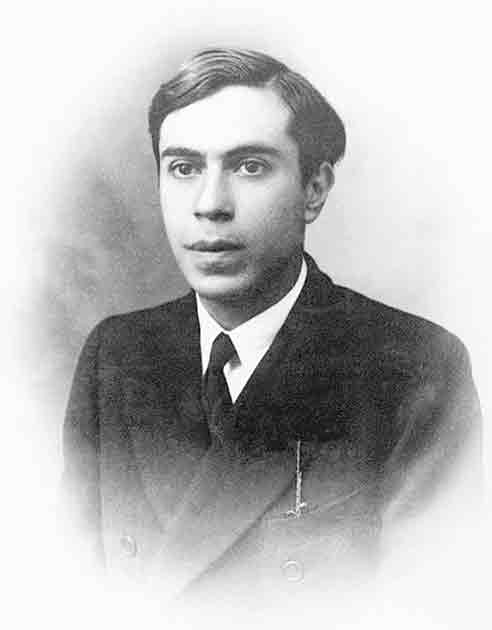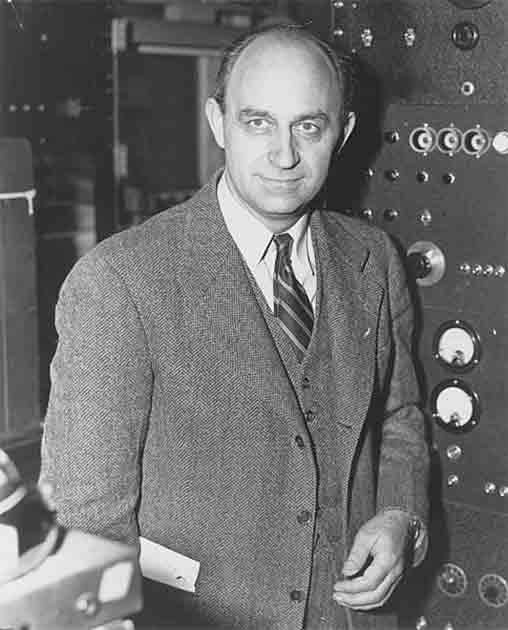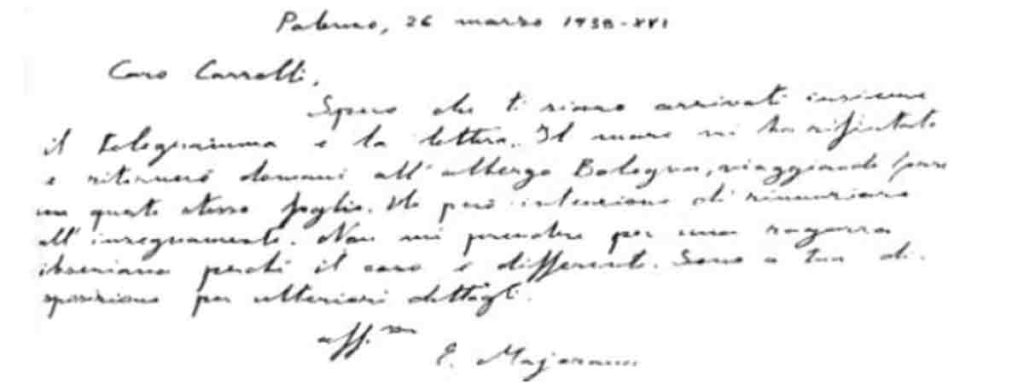Ettore Majorana’s work had an enormous impact on the world of physics. He worked with and inspired some of the 20th century’s greatest minds, helping to discover the neutrino and ushering in a new era of physics in the process.
So why isn’t he as well-known as some of his colleagues? A brilliant Italian theoretical physicist, Majorana vanished without a trace in 1938, leaving behind a void that echoes with unanswered questions.
As a pioneer in quantum mechanics and particle physics, his contributions were profound, but the circumstances surrounding his enigmatic disappearance have fueled decades of speculation and intrigue.
Was he murdered? Did he take his own life? Or did he run away to start afresh? When his case was reopened in 2011 people were left with more questions than ever before.
Majorana the Genius
Ettore Majorana was born on 5 August 1906 in Catania, Sicily to Fabio Majorana and Domenica Majorana (née Migliorini). He was incredibly academically gifted from an early age, capable of astounding feats of mental math like multiplying large numbers and producing square and cube roots in his head.
As a boy, he was said to be cripplingly shy, a trait that would continue into adulthood. In 1923 he traveled to Rome where he began studying engineering at the prestigious Sapienza University.

Five years later, urged on by famed physicist Emilio Segre, Majorana made a decision that would change science forever and switched his studies to physics. He quickly joined Enrico Fermi, the man who invented the first nuclear reactor, as one of his famous “Via Panisperna boys.” He worked with the team as a theoretical physicist.
It’s hard to sum up Majorana’s brilliance if you haven’t studied physics. Majorana’s expertise primarily centered around quantum mechanics, where he displayed exceptional insight into the behavior of fundamental particles.
His contributions were instrumental in advancing the theoretical foundations of quantum physics. Majorana’s work focused on understanding the nature of particles, particularly fermions, and his ideas have had a lasting impact on the field.
In 1929, just 23 years old, Majorana won his Laurea in physics from the University of Rome La Sapienza. The paper he published three years later helped lead to a whole new sub-branch of atomic physics, the study of radio-frequency spectroscopy.
- Judge Crater: The “Missingest Man” in New York City
- Agatha Christie’s Disappearance: Amnesia, Suicide, or Despair?
Not long after this, in 1933, he left Italy and traveled to Leipzig, Germany. While there he worked with and befriended yet another notable physicist, Werner Heisenberg, a pioneer of quantum physics.
Majorana’s research didn’t just help revolutionize our understanding of quantum physics. He worked with some of the most famous physicists of the period, helping them complete their own research. Everyone who worked with him quickly gained a great respect for his work.

This is best summed up by Enrico Fermi himself who described Majorana as follows: “There are several categories of scientists in the world; those of second or third rank do their best but never get very far. Then there is the first rank, those who make important discoveries, fundamental to scientific progress. But then there are the geniuses, like Galilei and Newton. Majorana was one of these.” High praise indeed.
Major Accomplishments
For decades some of Majorana’s greatest achievements remained overlooked. This was largely down to the fact that the man hated receiving attention. He rarely took direct credit for his discoveries, thinking them dull and unimpressive. In his entire career he produced just nine papers.
His most notable contribution was the formulation of the Majorana equation, a groundbreaking theoretical framework that described particles capable of being their own antiparticles. This concept, known as Majorana fermions, introduced a new dimension to the understanding of particle physics.
In addition to the Majorana equation, he made influential strides in the study of neutrinos, contributing valuable insights into their properties and behavior. Fermi wanted Majorana to write an article on his discovery, but the ever-shy Majorana refused. The following year another physicist used an experiment to prove Majorana’s neutron was real and earned a Nobel Prize in the process.
His accomplishments were so impressive that in 1938 at the relatively early age of 31 Majorana was made a full professor of theoretical physics at the University of Naples. They required him to take no exams or prove his credentials, stating, “high fame of singular expertise reached in the field of theoretical physics”.
Disappearance
In 1933 Majorana had become seriously ill with gastritis and was showing signs of acute exhaustion. This marked a downward spiral where for four years he became a near total recluse.
He locked himself away, rarely visiting the university and refusing to communicate with his family or friends. During this time, he published nothing, working on his theories in secret.
Things looked up in 1938, by which time he had recovered enough to accept the position at the University of Naples, but it didn’t last long. On March 25, 1938, he disappeared under extremely strange circumstances. It seems everyone who knew him had a different theory as to what happened.
It began with the young scientist withdrawing all his funds from the bank and then traveling to Palermo from Naples. It’s thought he may have been traveling there to visit a friend, Emilio Segre, who was actually in the US at the time.
While in Palermo Majorana bought a return ticket to Naples but never used it. Shortly after buying it, he sent a letter to his boss, Antonio Carrelli, director of the Naples Physics Institute, which stated that he would not be returning.
He apologized for any trouble caused and begged for forgiveness. The strangest part of the letter though was how he ended it, cryptically stating, “I ask you to remember me to all those I learned to know and appreciate in your Institute: I will keep a fond memory of them all at least until 11 pm tonight, possibly later too.”
His body was never found, and the disappearance remained a mystery for decades.

Some of Majorana’s former colleagues suspected the man had committed suicide. He had been troubled in the past, overworked himself, and was acting strangely. The bit about “11 pm tonight” also had a ring of finality to it, leading some to believe he threw himself into the ocean.
Others wondered whether he had retired to a monastery. Majorana had grown up in a Catholic household and was still a religious man despite his scientific leanings. Many members of his family believed he had abandoned his old life to live a simpler one. His old confessor, Monsignor Riccieri, stated that Majorana would never have killed himself but had experienced “mystical crises” in the past.
And then there are those who believed he was kidnapped, or murdered. When Majorana first traveled to Germany to work with Heisenberg the Germans were in power, but the Second World War had not begun. It has been theorized that Majorana may have been kidnapped or murdered to prevent his genius from being used to build an atomic weapon, either by the Brits, Americans, or Germans.
Closing the Case
Another popular theory was that Majorana emigrated, either to Argentina or Venezuela to start a new life. In 2011 the Rome Attorney’s Office reopened Majorana’s missing person case after a witness came forward claiming to have met Majorana in Buenos Aires following WW2.
In June of that year Italy’s police, the Carabinieri, announced that they had analyzed a photograph of a man taken in Argentina in 1955. Using facial recognition software, it was found the man’s face had ten points of similarity with Majorana’s. They decided the two were probably the same person.
Four years later on February 4, 2015, the Rome Attorney’s Office announced that the case had been closed. They believed that Majorana had been alive and living in Valencia between 1955 and 1959. They had no reason to believe Majorana had been forced into leaving his own life and felt he had done so by personal choice.

Did the Italian cops get it right? Not everyone is convinced. For many, it feels like the decades-long case was wrapped up a bit too neatly and a bit too quickly.
Too many questions were left unanswered. Why did he do it? What had he been doing for all those years? What happened to Majorana in the end?
Despite extensive investigations and the reopening of the case, the mystery persists. Theories surrounding his fate, from voluntary disappearance to political motivations, highlight the ambiguity that shrouds this brilliant physicist’s final days. Ettore Majorana’s vanishing act continues to captivate imaginations, reminding us that even in the pursuit of scientific truth, some questions remain elusive and enigmatic.
Top Image: A puzzle unsolved: newspaper article covering the disappearance of Ettore Majorana. Source: Domenica del Corriere. Edité par Rizzoli, Roberto Gervaso : parlami d’amore Mariù, / Public Domain.